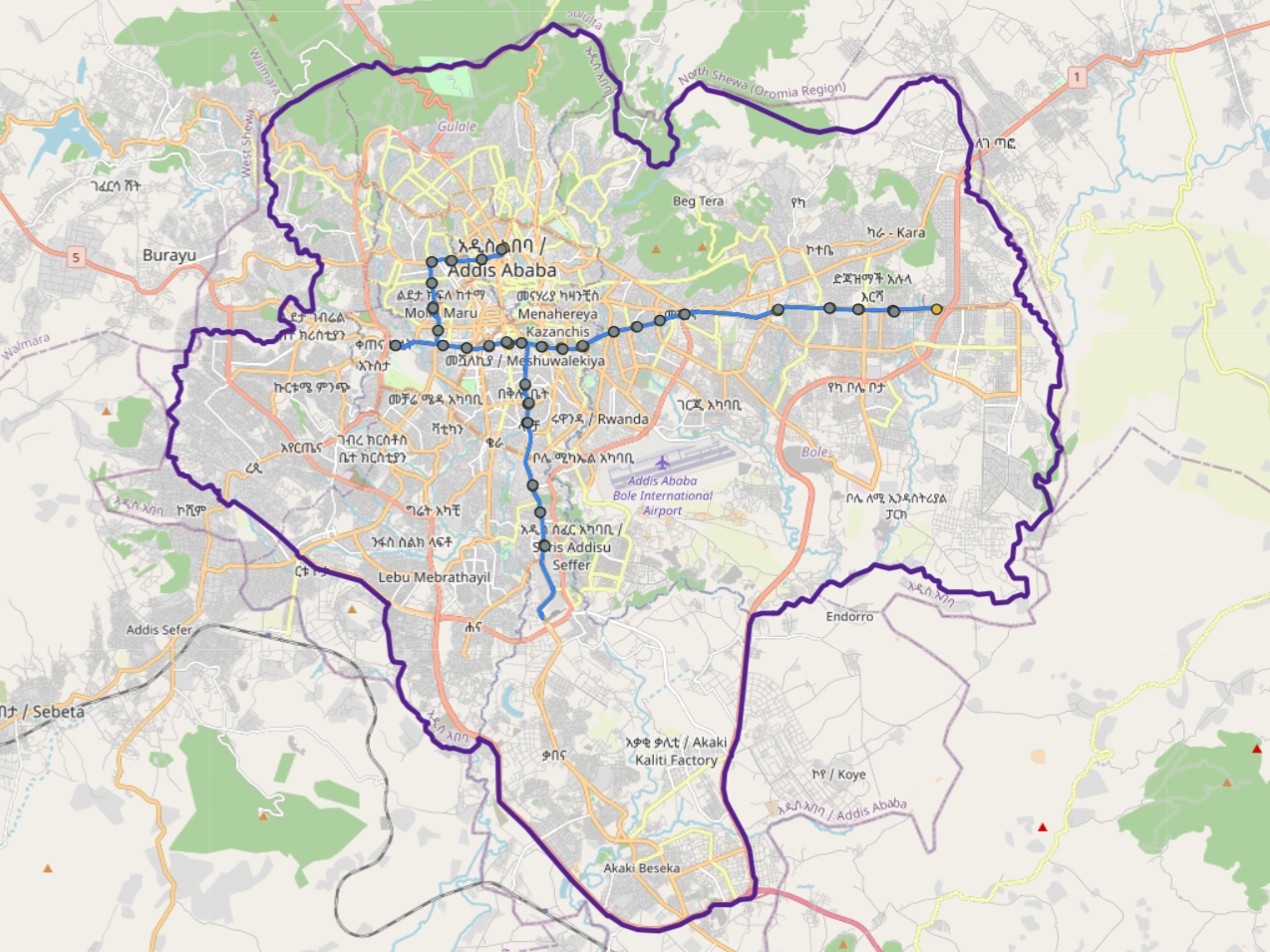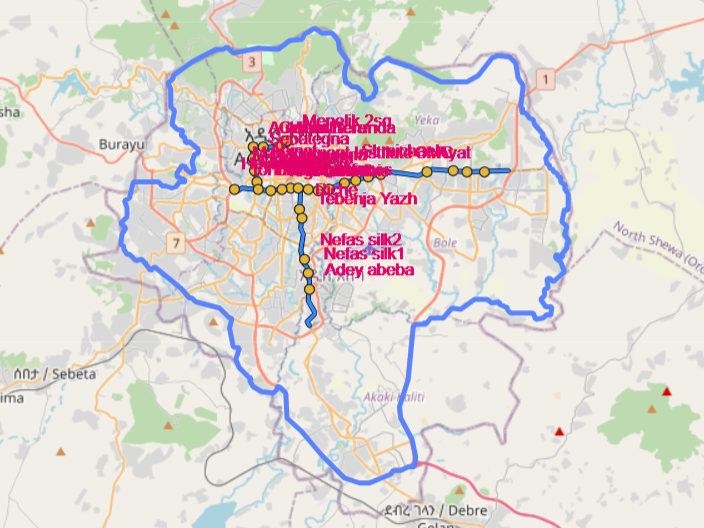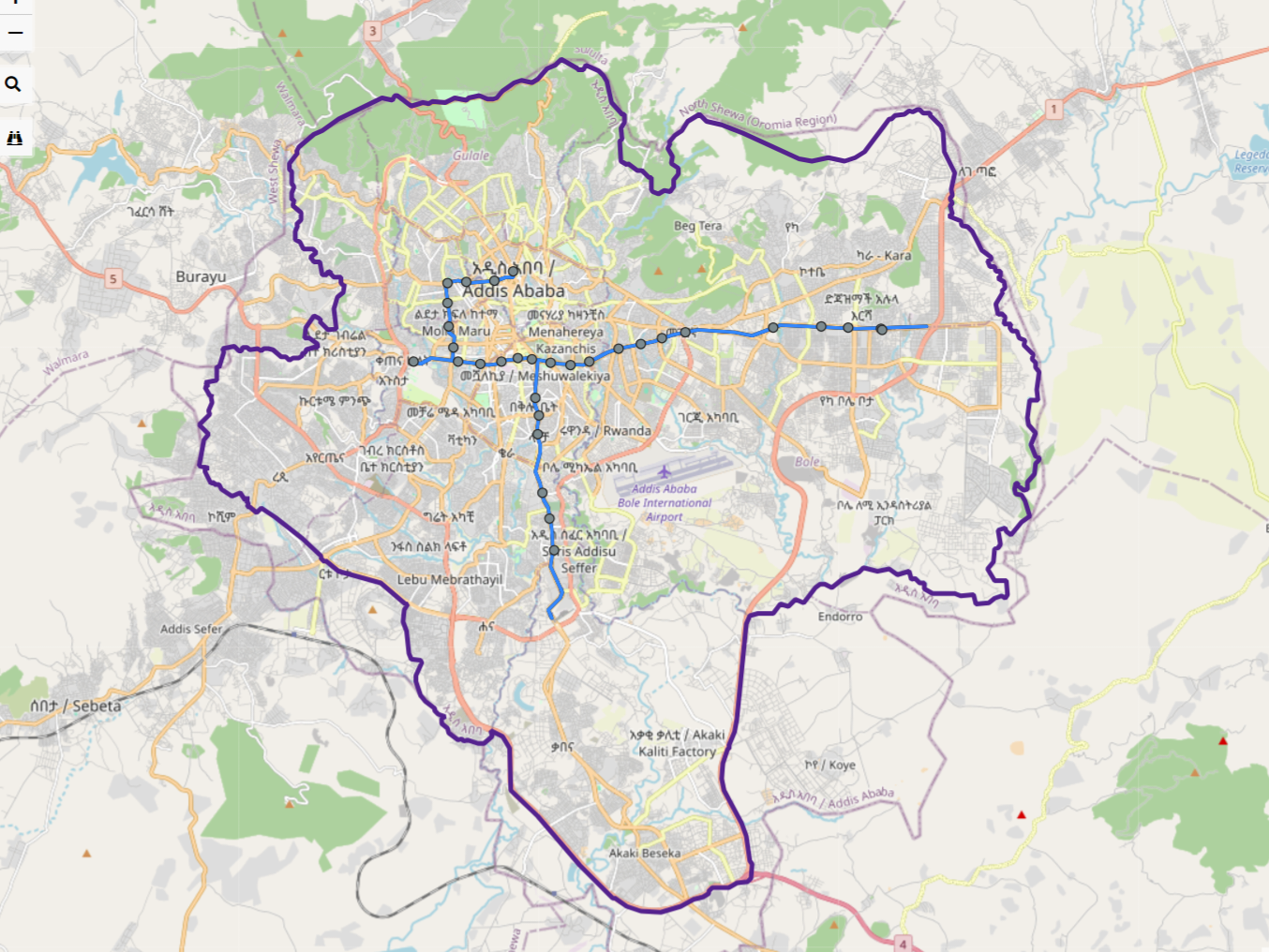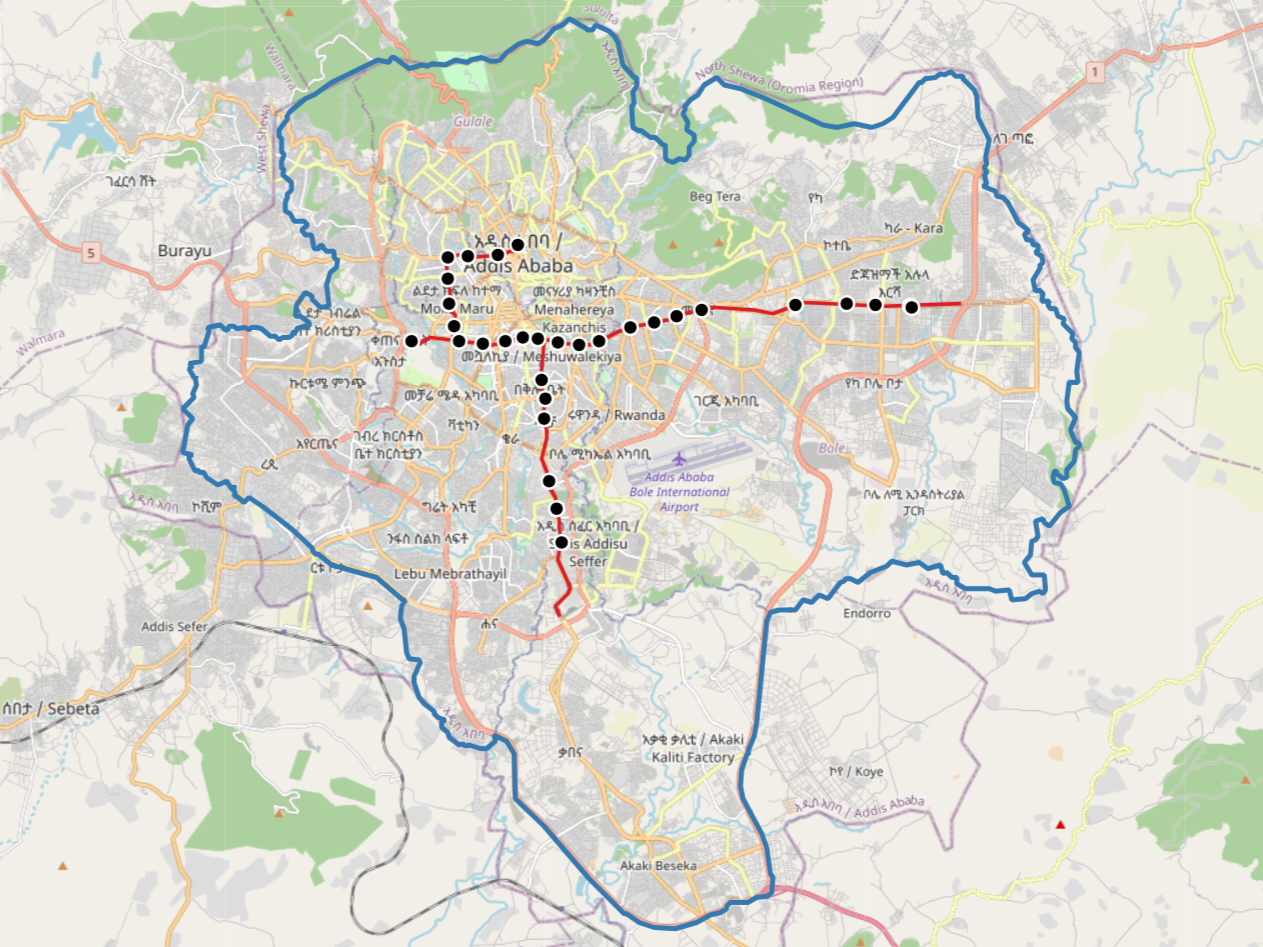
The visualization aspect of the comprehensive data analysis conducted as part of the project is pivotal in elucidating key insights and facilitating decision-making processes. By transforming raw data into visually engaging representations, we enhance comprehension and enable stakeholders to grasp complex patterns and trends at a glance.
Utilizing a variety of visualization techniques, we depicted a wide array of information pertaining to the LRT system in Addis Ababa. Interactive maps were created to illustrate train routes, station locations, passenger flows, and user perspectives. These maps serve as dynamic tools for exploring the spatial distribution of various elements within the transit network, allowing for a deeper understanding of usage patterns and connectivity.

From the total LRT users according to our analysis 48.9% are female and 51.1 % are male

Age ratio of female LRT user

In 2023 the reports show that around 81% of female and 43% of male have faced harassment experiences. According to our data analysis result on the LRT shows that around 54% of females and 60% of males have experienced or witnessed any form of gender related harassments when using public transport in Addis Ababa.

From the total user surveyed around 42.8% of users haven’t experienced or witnessed any form of gender related harassments and around 56.9% of users have experienced or witnessed any form of gender related harassments

According to our data analysis made the most vulnerable age groups of females are from 21 to 34 years old
Percentage of females who face harassment

From the analysis we have got stations of different location face different amount of harassment.


Harassment occurs in differect time period like Day and Night

Different stations contain different amount of users so In order to see Its change we made those two maps of stations at off peak and after noon peak hour


Also the availability of light infrastructure is different from one station to another station. This can be also the reason why some stations have high harassment and another have low harassment





Before diving into specific recommendations, it's essential to provide a brief overview of other countries like us how they tackle the Gender based harassment in public transport services in their country.

Actions
Implementing gender-sensitive training for public transport staff
Establishing dedicated hotlines and mobile apps for reporting harassment
Deploying plainclothes officers to monitor and prevent incidents.

Actions
Enforcing anti-harassment laws within public transport agencies
Partnering with women's organizations to conduct awareness campaigns and empowerment workshops
Installing panic buttons and CCTV cameras in vehicles.

Actions
Strengthening penalties for harassment offenses in transport regulations
Providing sensitivity training for drivers and conductors
Establishing safe waiting areas and designated women's zones on buses and trains.
Around Menelik up to Sebategna, The lack of light infrastructure, lack of police members in the train makes female users to suffer a lot for a gender based harassment. So we suggest more Light Infrastructures, and police members around those stations.
Around Tor hailoch, Lideta, Riche, Tebenja Yazh, Urael, Hayahulet 2 and megenagna there is high amount of lack of safety inside the train. So there should be much more police officers INSIDE the train
Around Tor hailoch, Megenagna, Riche to Nifas Silk 1 the availability of train is low and there is high amount of crowdedness. So we suggest to move more trains around this stations.
Around Menelik 2,Dar Mar, Tebenja Yazh, Nefas Silk2 and Management Institute more harassment is occurring at the night time so light infrastructures should be functional inside the station as well around the segments. Also there should be more police officers assigned around here